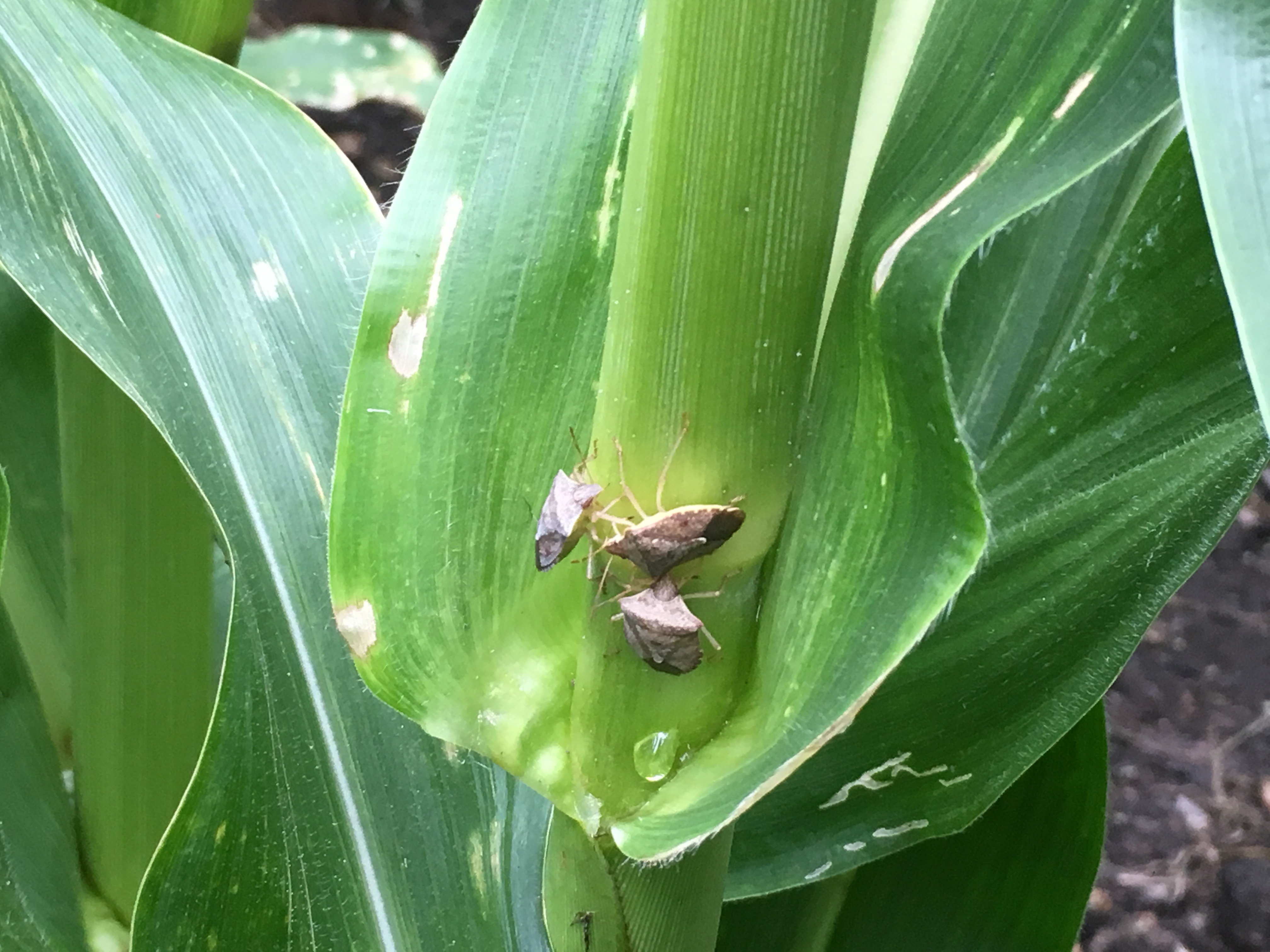Monitor for Stink Bugs in Corn
go.ncsu.edu/readext?940545
en Español / em Português
El inglés es el idioma de control de esta página. En la medida en que haya algún conflicto entre la traducción al inglés y la traducción, el inglés prevalece.
Al hacer clic en el enlace de traducción se activa un servicio de traducción gratuito para convertir la página al español. Al igual que con cualquier traducción por Internet, la conversión no es sensible al contexto y puede que no traduzca el texto en su significado original. NC State Extension no garantiza la exactitud del texto traducido. Por favor, tenga en cuenta que algunas aplicaciones y/o servicios pueden no funcionar como se espera cuando se traducen.
Português
Inglês é o idioma de controle desta página. Na medida que haja algum conflito entre o texto original em Inglês e a tradução, o Inglês prevalece.
Ao clicar no link de tradução, um serviço gratuito de tradução será ativado para converter a página para o Português. Como em qualquer tradução pela internet, a conversão não é sensivel ao contexto e pode não ocorrer a tradução para o significado orginal. O serviço de Extensão da Carolina do Norte (NC State Extension) não garante a exatidão do texto traduzido. Por favor, observe que algumas funções ou serviços podem não funcionar como esperado após a tradução.
English
English is the controlling language of this page. To the extent there is any conflict between the English text and the translation, English controls.
Clicking on the translation link activates a free translation service to convert the page to Spanish. As with any Internet translation, the conversion is not context-sensitive and may not translate the text to its original meaning. NC State Extension does not guarantee the accuracy of the translated text. Please note that some applications and/or services may not function as expected when translated.
Collapse ▲Although there was not a major problem with stink bugs in corn in 2022, that does not mean we can let down our guard (stop monitoring for them) in 2023. With regards to crop development currently, corn in the county ranges from V3 (early seedling) to almost VT (silking and tasseling) with the majority of it 2 to 3 weeks from silking and tasseling. It is during the time of ear initation and development, which is several weeks prior to VT that stink bugs, if present, will be probing the corn plant in the vicinity of the not yet visible, but developing ear, trying to locate, and feed on it with its needle like mouth part. Stink bugs can damage corn with its feeding after pollination, when kernels start developing, but it is when that young developing ear has not emerged, that the stink bug gets the most bang (ear damage) for his buck (feeding). With that in mind, consider these points:
- Be observant of stink bug activity prior to and all through the growing season. This will help to keep stink bugs on your radar.
- Watch all corn fields, but be especially mindful of corn fields that had soybeans next to or in the field the previous year. These fields are more likely to have a problem with stink bugs.
- Although stink bugs can damage corn seedlings like bill bugs, the other critical time starts several weeks before the appearance of silks (young immature ear) and tassels to R2 (brown silks).
- Just because you find stink bugs in a field and treat for them does not mean you should stop scouting your corn. As long as corn is at a vulnerable stage for stink bug feeding, the stink bugs can take a “bite” out of your wallet.
- Learn more about stink bugs in corn




